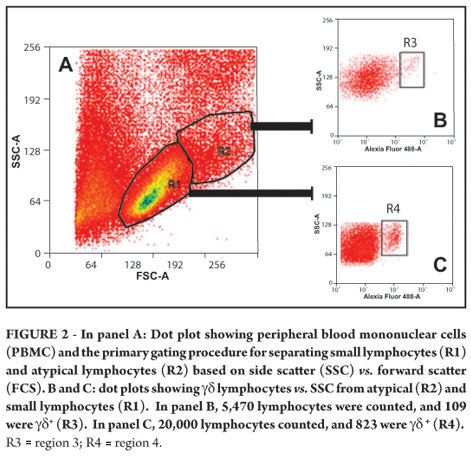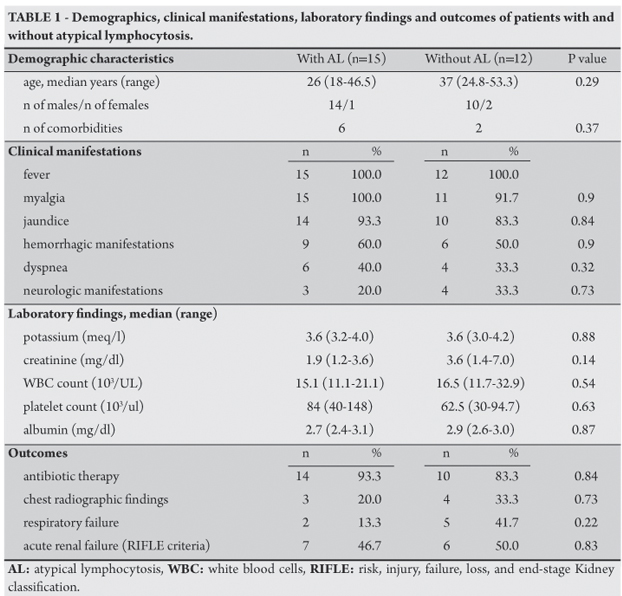INTRODUCTION: Leptospirosis is a zoonotic disease found in tropical and temperate countries, and its clinical diagnostic confusion with arboviruses (dengue fever, oropouche fever and yellow fever), Brazilian spotted fever, viral hepatitis and hantaviruses has been an ongoing public health concern. The aim of this observational study was to demonstrate an association between findings of atypical lymphocytosis and the progression of endemic leptospirosis. METHODS: A retrospective analysis was performed on the demographic, epidemiological, clinical and laboratory aspects of 27 human leptospirosis cases that occurred over a period of 13 years (1996-2009) with no reported epidemic outbreaks in Rio de Janeiro, Brazil. RESULTS: The overall mortality rate was 11.1% in our cohort of hospitalized cases. However, there was no mortality among patients with atypical lymphocytosis (OR = 11.1; 95% CI = 1.12-110.9; p = 0.04). Two patients who were in the septicemic phase showed signs of expansion of γδ T cell responses in peripheral blood. CONCLUSIONS: Atypical lymphocytosis may be observed in patients with leptospirosis. Our observations suggest that these atypical leukocyte subsets are associated with partial protection during the disease course of leptospirosis.
Leptospirosis; Atypical lymphocytes; γδ+ T cells; Clinical features




